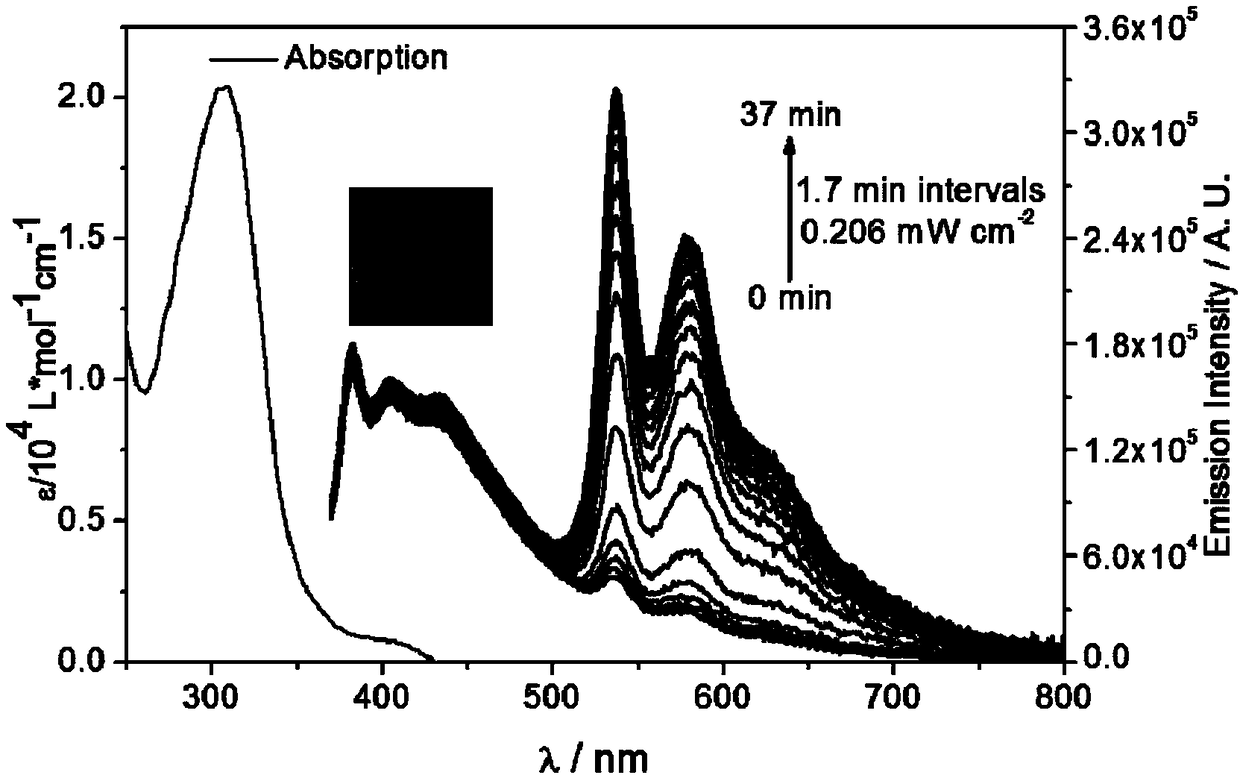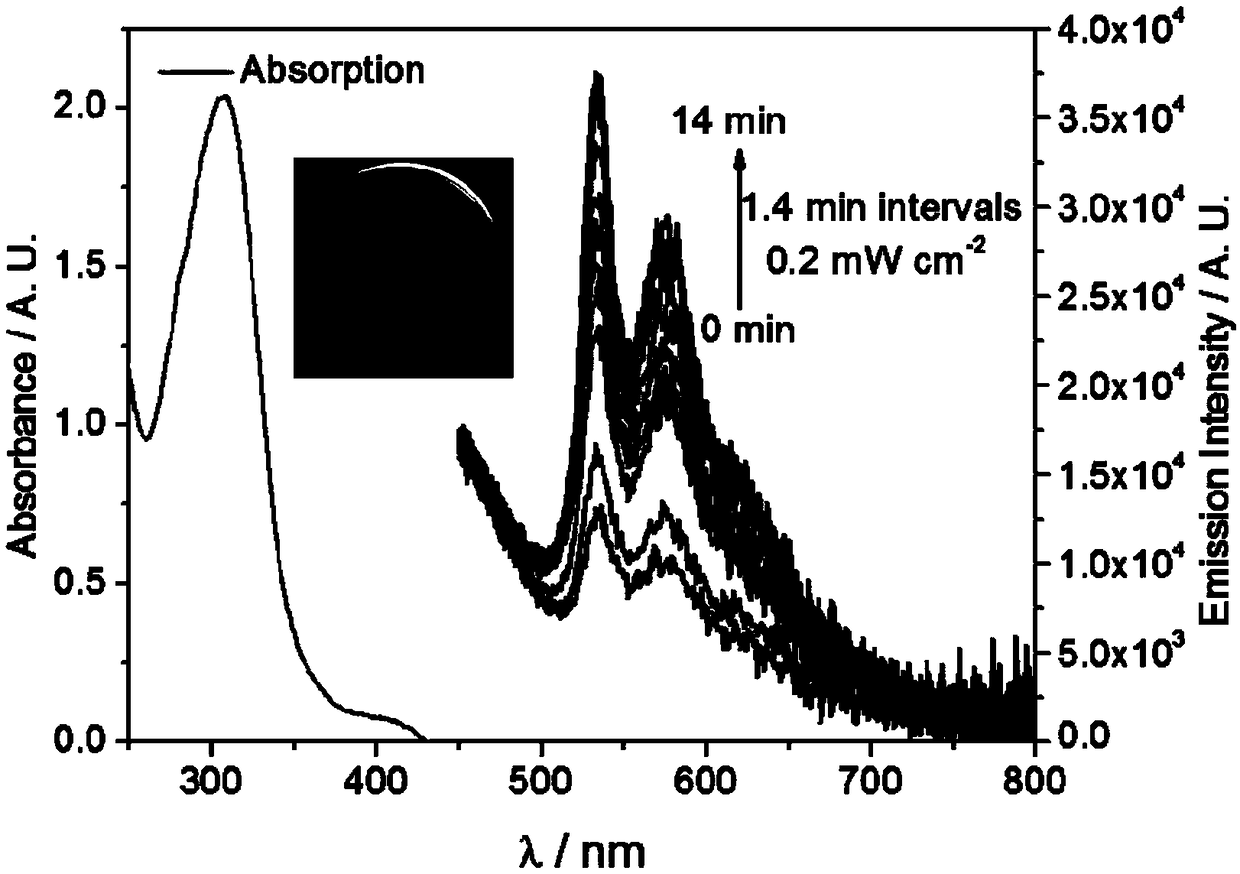Medium and method for protecting triplet excited state of photosensitizer through photochemically removing oxygen and application
A triplet excited state, photosensitizer technology, applied in chemical instruments and methods, photosensitive materials for optomechanical devices, fluorescence/phosphorescence, etc., can solve problems such as lack of fluidity
- Summary
- Abstract
- Description
- Claims
- Application Information
AI Technical Summary
Problems solved by technology
Method used
Image
Examples
Embodiment 1
[0064] In this embodiment, PVP is used as a solid medium, and PVP gel is used for photochemical oxygen removal to protect the emission of phosphorescence. The method is: adding 6g of PVP with a molecular weight of 40000 into methylene chloride containing photosensitizer formula II, the concentration of photosensitizer is 1.0×10 -5 mol·dm -3 , stir to promote the complete dissolution of PVP into a fluid, place it in a dark environment to volatilize dichloromethane, and form a gel with a fixed shape after 12 hours. The photoactivation spectrum of photosensitizer formula II in PVP gel is as follows: figure 1 shown.
Embodiment 2
[0066] This example proves that PVP can not only form a gel in dichloromethane for photolithography and activation, but also perform photolithography and activation in methanol and water. The specific implementation method is (taking methanol gel as an example): 6g PVP (molecular weight 40000) is added in the methanol solution containing photosensitizer formula I in 10ml, and the concentration of photosensitizer is 1.0×10 -4 mol·dm -3 After the PVP is completely dissolved, it is placed next to an infrared drying oven to accelerate methanol volatilization. After about 14 hours, a gel is formed. Stick the hollow pattern on the surface of the gel, then irradiate the gel with a UV flashlight for photolithography, and use a UV flashlight with a lower energy density to reproduce the photolithographic pattern. figure 2 Shown are photosensitizer formula I in methanol gel photoactivation spectrum and photolithographic pattern display results. image 3 The photoactivation spectrum of...
Embodiment 3
[0068] This example proves that the PVP gel can be repeatedly subjected to photolithography. The specific implementation is: add 6 g of PVP with a molecular weight of 40,000 to the dichloromethane solution containing the photosensitizer 2, and the concentration of the photosensitizer is 1.0×10 -5 mol·dm -3 , after the PVP is completely dissolved, pour it into a petri dish with a radius of 6.5cm, and place it in the dark for 12 hours to form a gel, and then irradiate the hollow pattern attached to the surface dish with ultraviolet light (365nm) for about 20s, and the ultraviolet light The distance to the hollow pattern is 5cm, and the optical power density is 30mW·cm -2 . Phosphorescence patterns appeared on the top of the gel when illuminated with a weak ultraviolet light source. Repeated photolithography and erasure for the same gel, the results in Figure 4 It is shown that the separated photos here have experienced the disappearance of photolithographic traces and then t...
PUM
 Login to View More
Login to View More Abstract
Description
Claims
Application Information
 Login to View More
Login to View More - R&D
- Intellectual Property
- Life Sciences
- Materials
- Tech Scout
- Unparalleled Data Quality
- Higher Quality Content
- 60% Fewer Hallucinations
Browse by: Latest US Patents, China's latest patents, Technical Efficacy Thesaurus, Application Domain, Technology Topic, Popular Technical Reports.
© 2025 PatSnap. All rights reserved.Legal|Privacy policy|Modern Slavery Act Transparency Statement|Sitemap|About US| Contact US: help@patsnap.com



